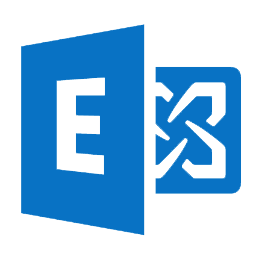
Update Exchange 2013 To Exchange CU1
Exchange 2013 CU2 is now available, if you are updating then you may want to check out Updating Exchange 2013 Cu1 to Cu2.
If you have already installed Exchange 2013 you will be aware that Microsoft has finally released Exchange 2013cu1, people who need to migrate from Exchange 2010 to Exchange 2013 can do so. Additionally people who had a greenfield install of Exchange 2013 may want to update to Exchange 2013cu1. We will go through process of updating Exchange 2013 to Exchange 2013cu1, you could also call this a service pack update to Exchange 2013.
Step 1 is to download the Exchange 2013 cu1 update from here. http://www.microsoft.com/en-us/download/details.aspx?id=38176
You will find its quite large at 1.3gig, it is basically a full media install of Exchange 2013.
What Is The Difference Between Exchange 2013 And Exchange 2013cu1
Lets take a quick look at some of the additions to Exchange 2013 in cu1 before we update.
- The biggest is obviously the support for coexistence with previous versions of Exchange, including Exchange 2010 sp3 and Exchange 2007 and its latest services pack.
- Updated Address Book Policies
- Updates to Group Management and nested groups, so a group can manage a group.
- As in previous versions of OWA, we once again can access public folders through Outlook Web Access.
- Unified Messaging components now have extra features within the EAC
- Updates to Monitoring and Performance management
Updating to Exchange 2013 cu1
Once downloaded, run the Exchange-64.exe and extract it to a folder. Then we need to run setup from a command prompt from where you extracted the Exchange 2013 update with the following commands. This is because there have been updates to the schema and permission in cu1. Upgrading to Exchange 2013cu1 will take around 90 minutes.
setup.exe /PrepareSchema /IAcceptExchangeServerLicenseTerms setup.exe /Preparead /IAcceptExchangeServerLicenseTerms setup.exe /Preparedomain /IAcceptExchangeServerLicenseTerms
Then add the RSAT-Clustering-CmdInterface feature with the following command.
Install-WindowsFeature RSAT-Clustering-CmdInterface
Or you will see this error
The Windows component RSAT-Clustering-CmdInterface isn’t installed on this computer and needs to be installed before Exchange Setup can begin.
For more information, visit: http://technet.microsoft.com/library(EXCHG.150)/ms.exch.setupreadiness.RsatClusteringCmdInterfaceInstalled.aspx
The finally simply double click setup from the extracted folder.
If any additional updates are found Exchange will download them if not you can continue by selecting next. Exchange 2013 cu1 will now initialize the setup. We now see the upgrade screen as seen below. Click next to start.
Then simply accept the terms and conditions of using Exchange 2013 and click next to continue.
Exchange 2013 cu1 will now go through various readiness checks, such as check the schema and permissions. If you have not ran the commands above you will experience errors. Now click install to commence the Exchange 2013 cu1 upgrade.
This can take about an hour, Exchange 2013 will go through carious updates.
Once complete you need to reboot your server, Exchange 2013 is now running Cumulative update 1
Tags: cu1





Davide Ruocco
| #
hi! good post! only a question.. i’ve only double click on setup file and install it .. is same correct? if not may i execute the shell command after install cu1 ? thank
Davide
Reply
Allen White
| #
Hi Davide,
It will fail the install if you just run setup, you must run the shell commands first.
Thanks
Allen
Reply
Davide Ruocco
| #
sorry for late answer but i’ve run setup.exe and install without problem. i need to run shell command after? thanks
Reply
Allen White
| #
No if is running fine the the Schema must of been extended 🙂
Reply
tien
| #
Hi,
I have 2 exchange 2013 MBX (DAG) and 1 exchange 2013 CAS.
The first exchange MBX has been upgraded successfully to CU1 but not the secondary exchange MBX.
I get the following error message.
step 10
The access to “E:\Program Files\Microsoft\Exchange Server\V15\ClientAccess\owa\web.config” is refused.
Do you have an idea ? Thank you.
Reply
Allen White
| #
Hi there, that looks like an open file permission problem while it is trying to update the file web.config. I would make sure that OWA is closed and the ECP/EAC is closed. Also may be an idea to stop the ECP/EAC site is IIS. Let me know!
Reply